Search
Search Results
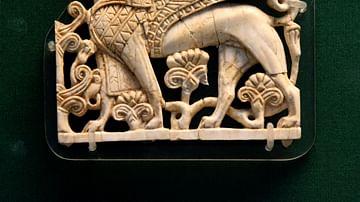
Article
The Nimrud Ivories: Their Discovery & History
In 1845 CE, the archaeologist Austen Henry Layard began excavations at the ruins of the city of Nimrud in the region which is northern Iraq in the present day. Layard's expedition was part of a larger movement at the time to uncover ancient...
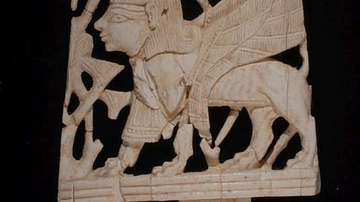
Image
Ivory Furniture Inlay with Sphinx
This object is an ivory furniture inlay depicting a striding sphinx. It was excavated from Samaria and dates to the Iron Age II (9th–8th century BCE). It has a length of 7.5 cm and a width of 7 cm. (The Israel Museum, Jerusalem) ©The Israel...
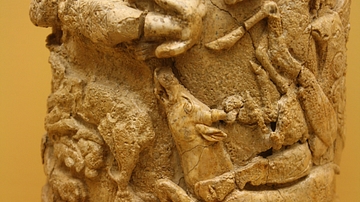
Image
Ivory Pyxis
A Greek ivory pyxis depicting griffins attacking stags. 15th Century BCE. (Agora Museum, Athens)
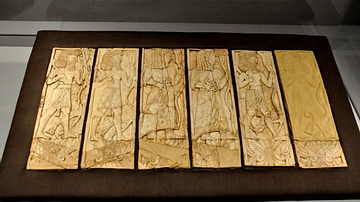
Image
Ivory Plaque from Nimrud (Ancient Kalhu)
This ivory plaque depicts six Assyrian worshippers in procession in six vertical rectangles. Note the details of their dresses. The men are bare-chested and wear kilts while the women wear a full dress. Both genders wear an impressive belt...
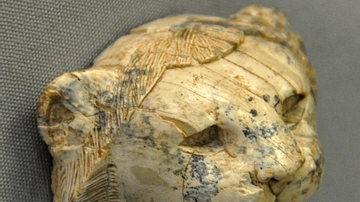
Image
Ivory Head of a Lion from Nimrud
This piece of ivory is part of the so-called "Nimrud Ivories." These ivories decorated chariots, high status furniture, and horse trappings. They were covered with thin gold-leaf or ornamented with semi-precious stones. It is thought these...
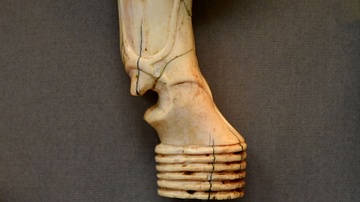
Image
Ivory Stool Leg
Stools were the most common pieces of furniture used in ancient Egypt. This ivory leg was probably attached to a frame by means of a leather thong lashed through the holes. From its cylinder shape, it was likely to have been the front leg...
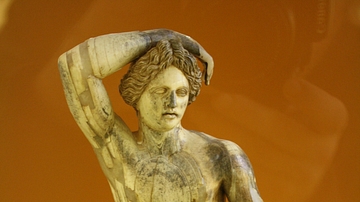
Image
Ivory Statuette of Apollo
An ivory statuette of Apollo Lykeios, 3rd Century BCE. The statuette was restored after being found in 200 pieces at the bottom of a well. (Agora Museum, Athens)
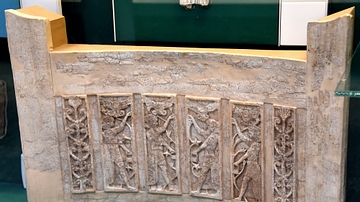
Image
Ivory Back Rest From Nimrud
The 6 ivory panels, set within a plane framework, would originally have been mounted on the concave inner surface of a curved wooden support. By analogy with a similar curved back rest from Salamis in Cyprus, it seems likely that this piece...
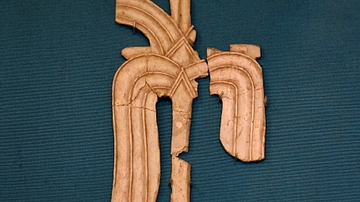
Image
Carved Ivory from Samaria
This carved piece of ivory, in a Phoenician style, is part of large number of ivories which were found in the city of Samaria during the excavations of J. W. Crowfoot in 1931-1935 CE. They consist, for the most part, of furniture inlays...
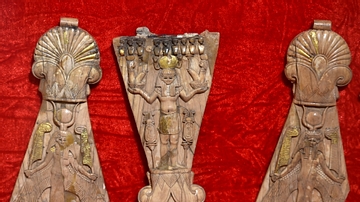
Image
Ivory Horse Frontlets from Nimrud
These three frontlets were found inside Well AJ at the North-West Palace at Nimrud (in modern-day Nineveh Governorate, Iraq). They are part of the so-called "Classical Phoenician" hinged frontlets of Group 2. The middle frontlet depicts...